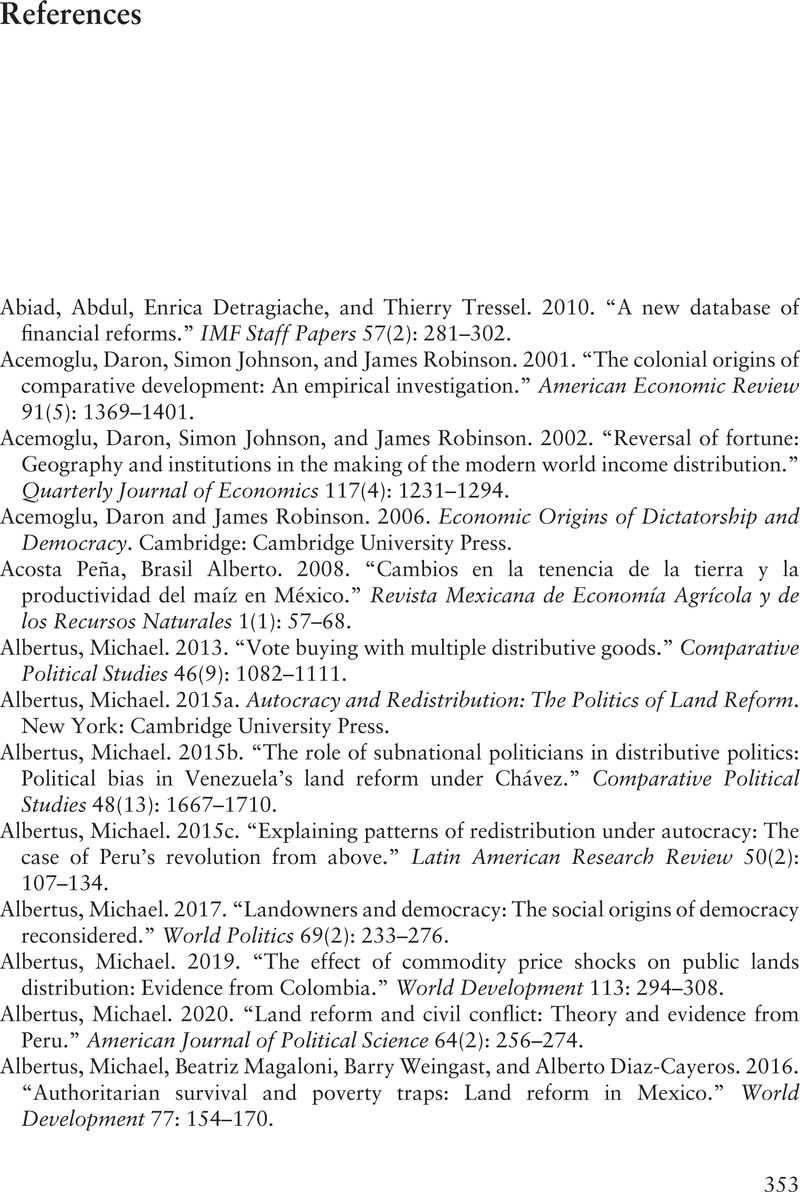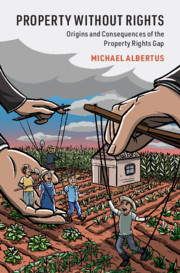Book contents
- Property without Rights
- Cambridge Studies in Comparative Politics
- Property without Rights
- Copyright page
- Contents
- Figures
- Tables
- Acknowledgments
- 1 Introduction
- 2 Conceptualizing and Measuring the Property Rights Gap
- 3 The Political Origins of the Property Rights Gap
- 4 Evidence on the Rise and Fall of Property Rights Gaps in Latin America
- 5 Consequences of the Property Rights Gap
- 6 Opening and Closing a Property Rights Gap in Peru
- 7 The Long-Term Consequences of Peru’s Property Rights Gap
- 8 Property Rights Gaps around the World
- 9 Conclusion
- Book part
- References
- Index
- Other Books in the Series (continued from page iii)
- References
References
Published online by Cambridge University Press: 22 December 2020
- Property without Rights
- Cambridge Studies in Comparative Politics
- Property without Rights
- Copyright page
- Contents
- Figures
- Tables
- Acknowledgments
- 1 Introduction
- 2 Conceptualizing and Measuring the Property Rights Gap
- 3 The Political Origins of the Property Rights Gap
- 4 Evidence on the Rise and Fall of Property Rights Gaps in Latin America
- 5 Consequences of the Property Rights Gap
- 6 Opening and Closing a Property Rights Gap in Peru
- 7 The Long-Term Consequences of Peru’s Property Rights Gap
- 8 Property Rights Gaps around the World
- 9 Conclusion
- Book part
- References
- Index
- Other Books in the Series (continued from page iii)
- References
Summary

- Type
- Chapter
- Information
- Property without RightsOrigins and Consequences of the Property Rights Gap, pp. 353 - 374Publisher: Cambridge University PressPrint publication year: 2021



